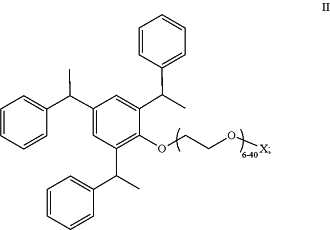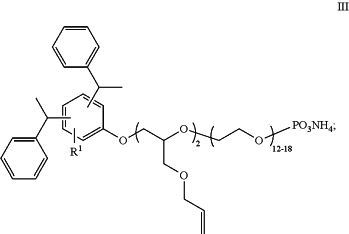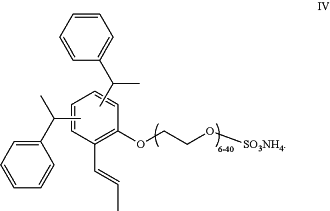| CPC C08F 283/12 (2013.01) [C08F 2/18 (2013.01); C08F 230/08 (2013.01); C09D 183/12 (2013.01)] | 6 Claims |
|
1. A process for preparing an aqueous dispersion of composite microspheres comprising the step of contacting, under polymerization conditions, an aqueous dispersion of first composite microspheres comprising a polysiloxane and structural units of a first monoethylenically unsaturated nonionic monomer with first stage monomers comprising, based on the weight of the first stage monomers, from a) 0.05 to 5 weight percent of a nonionic polyalkylene oxide or anionic polyalkylene oxide salt of a distyryl or tristyryl phenol; and b) from 85 to 99.95 weight percent of a second monoethylenically unsaturated nonionic monomer, to grow out the first composite microspheres to form an aqueous dispersion of second composite microspheres, wherein the first composite microspheres have an average particle size in the range of from 1 μm to 15 μm; and the second composite microspheres have a particle size in the range of from 1.5 μm to 20 μm; wherein the polysiloxane is represented by Formula V:
 wherein each R4 is independently C1-C30-alkyl, O—C1-C6-alkyl, or H, with the proviso that at least one R4 is C1-C30-alkyl; each R5 is independently C1-C30-alkyl, H, or Si(R6)3; wherein each R6 is independently C1-C6-alkyl; and n is from 4 to 10,000;
wherein the nonionic polyalkylene oxide or anionic polyalkylene oxide salt of the distyryl or tristyryl phenol is represented by:
a) the compound of formula II:
 where X is H, methyl, —SO3H, —SO3Y, —H2PO3, —HPO3Y, or —PO3Y2, where Y is Li+, Na+, K+, or NH4+; and n is 6 to 40; or
b) the compound of formula III:
 or
c) the compound of formula IV:
 |